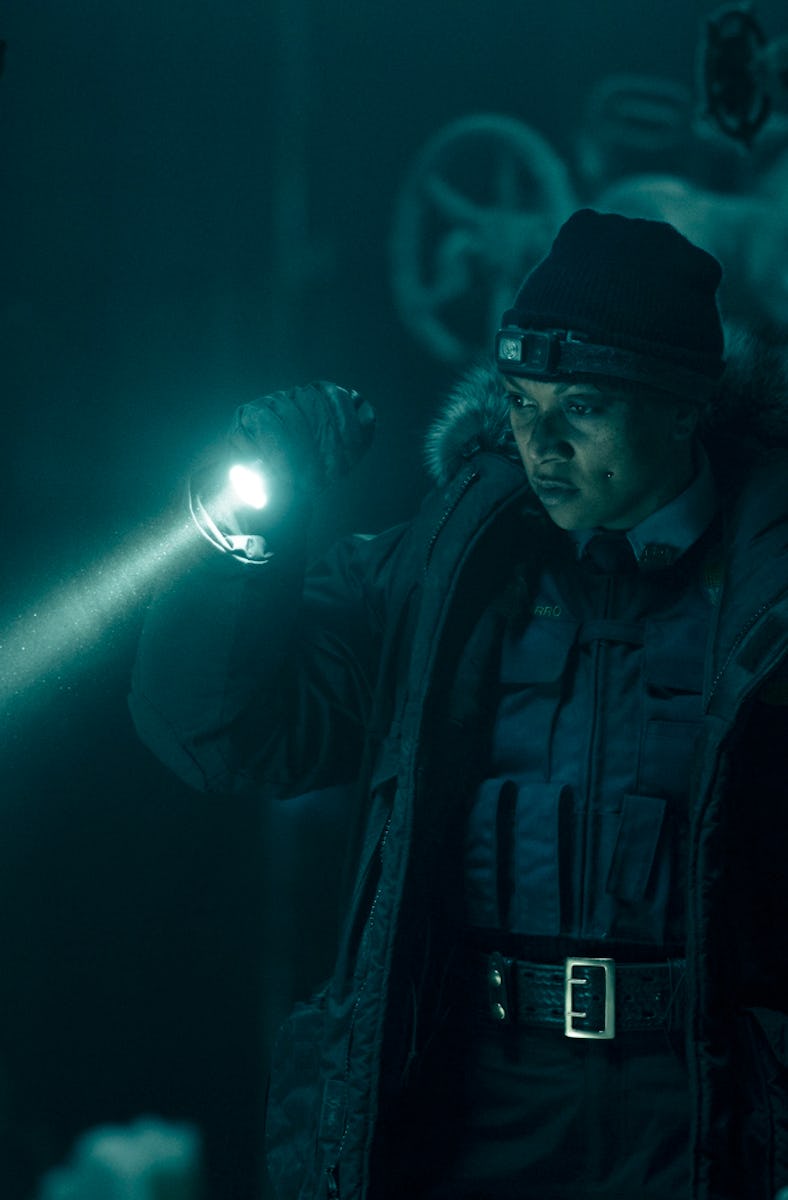The Brilliance of True Detective: Night Country’s Lightless Setting
For once, things actually look as hopeless as they’re meant to seem.

There’s a lot worth celebrating about True Detective: Night Country. From Jodie Foster’s commanding, icy performance as Liz Danvers to its clever, thematically rich connections to the HBO series’ past seasons, Night Country has packed itself full of enough satisfying, intriguing details to make viewers feel safe about giving it both their time and attention. The further into its story the True Detective season gets, the more ingenious its perpetually nighttime setting seems, too.
Ever since it began with Ennis, Alaska’s final sunset of the year, Night Country has fully lived up to the promise of its title. Its exterior scenes have all taken place under the same dark sky, while its interiors have been devoid of any natural light. The result has been disorienting, to say the least. The lack of any daylight has made it impossible to keep track of the passage of time — and therein lies the true brilliance of the season’s lightless environment.
No one can escape the darkness of True Detective: Night Country — least of all its two leads.
In the most obvious way, True Detective: Night Country’s pitch-black setting heightens the darkness of its story, which revolves not only around the frozen deaths of a group of scientists but also the brutal, hateful murder of Annie K. (Nivi Pedersen), an indigenous activist whose death has haunted both Liz Danvers and Evangeline Navarro (Kali Reis). The season’s nocturnal look makes Ennis really seem like a place where anything, even the most vile of acts, can go unnoticed and unsolved.
It also allows the supernatural forces operating within Night Country’s story to seem truly omnipresent. Our ability to only see so far around Liz, Navarro, and the rest of the season’s characters makes it chillingly possible for anything to be lurking just outside the periphery of our view. That, in turn, forces one to wonder whether Liz and Navarro really are being constantly observed, whether by the ghosts of their past or those responsible for Annie K.’s murder.
The ongoing absence of sunlight throughout Night Country has also imbued the season with a timeless feeling that ties nicely back to certain ideas that have been at the center of True Detective since it premiered. The HBO series has, after all, long been fascinated by the circular nature of time and the notion that all of us are simply trapped in a never-ending loop.
With that in mind, it’s worth noting that the longer viewers go without getting any clear sense of how many days are passing by before their eyes, the more one begins to feel like Liz, Navarro, and Peter Prior (Finn Bennett) are just going in circles. That’s a sensation that adds a lot to the overwhelming sense of hopelessness and sadness that seems to lurk just beneath the surface of Night Country’s Alaskan setting.
Without any sense of physical progress to latch onto, it really does seem like True Detective: Night Country’s characters are stuck moving in circles right now.
It remains to be seen whether there’s any deeper meaning connected to True Detective: Night Country’s title. The conclusion of its fourth episode, which sees a scarred, crazed Otis Heiss (Klaus Tange) tell Foster’s Liz, “We’re all in the night country now,” certainly suggests that there might be. Either way, while the season has been full of well-calculated creative decisions up to this point, few have paid off as well as its perpetually dark setting.
Time may or may not be a flat circle, but in True Detective: Night Country, it’s imperceptible, which is arguably even more terrifying.
New episodes of True Detective: Night Country premiere Sundays on HBO.
This article was originally published on